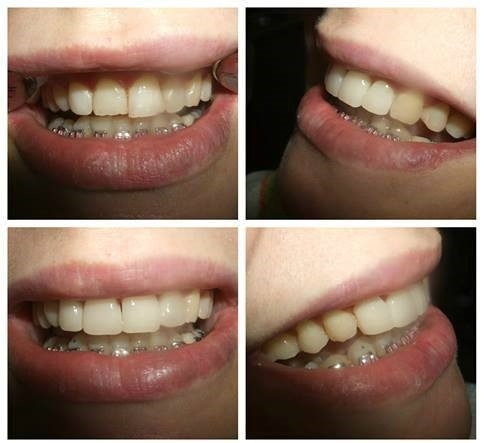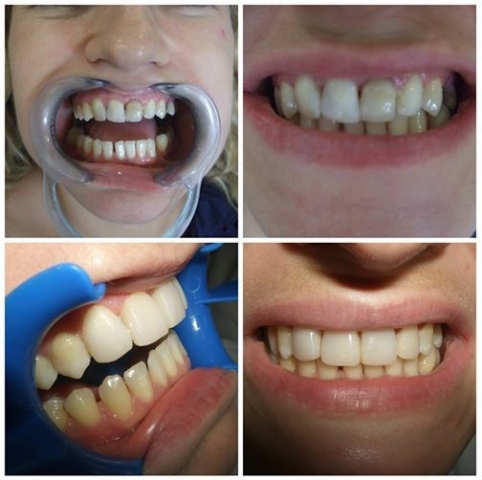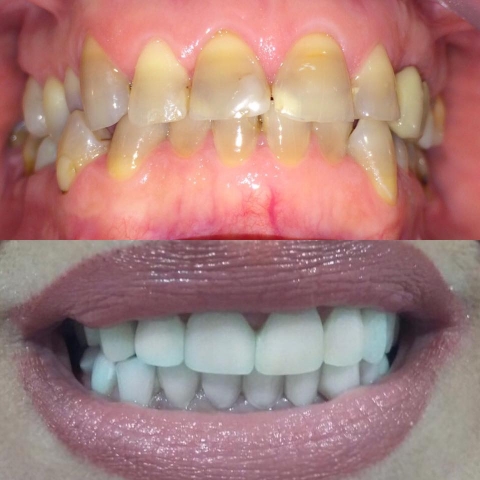What are composite facets – flakes or viniri?
Aesthetic composite materials are faithfully imitating the color and shape of the teeth. Composite facets (flakes, viniri) represent the compensation of the labia (outer, visible) surface of the teeth, which is most commonly placed on the teeth in the frontal region (upper and lower incisors, isps and premolars). Composite facets belong to restorative procedures with high aesthetic qualities. The minimum preparation of hard tooth tissue, or without the preparation of teeth, achieves a maximum aesthetic effect during only one visit to the dental office, which is of great importance for the patient.
Types of composite facets we use in our clinic?
In our clinic, we use two types of composite facets:
1) directly modeled composite facets – are placed during one visit to the dental office. Aesthetic composite materials are faithfully imitating the color and shape of the teeth. The constraints of these facets are that the incisal edge, i.e. The length of the crown can not be prolonged, and it is long lasting as much as aesthetic fillings, ie, plombe.


2) factory composite facets – flakes, viniri – are made in many shapes and sizes, have sufficient strength, excellent aesthetics, are long lasting and are placed during one visit to the dentist. We use finished composite composite facets Componeer, the Swiss manufacturer Coltene, as well as Edelweiss facets – Edelweiss Austrian manufacturer

In which cases are the composite facets?
Composite facets are used for the restoration of individual teeth, as well as for complete reconstruction – transformation – in the area of the upper upper and lower teeth. Used in:
1) the incorrect position of the teeth,
2) extensive, old and aesthetically unsatisfactory fillings (seals),
3) abrasion and erosion of the teeth – when the length of the toothbrush is reduced,
4) fractures and injuries of the crown of teeth,
5) closing the diastem (increased distance between the teeth),
6) extension of the crown of teeth for aesthetic reasons,
7) teeth crowns that can not be bleached and in the yellow overburden of tooth ropes caused by various factors (drugs, smoking, in the teeth – endodontically treated teeth, etc.).
Advantages of composite facets and the reasons for choosing them:
1) beautiful and new teeth after just one dental treatment;
2) the patient has no impression of the existence of a foreign body in the mouth;
3) high level of preservation of dental substance, minimal preparation ie grinding of teeth (extremely thin facets of thickness of 0.3 mm);
4) less stress in patients due to treatment;
5) the possibility of adjusting the solution to the patient’s requirements and wishes;
6) high quality surface and edges of the facet, which contributes to the natural appearance of tooth restoration;
7) economy, ie. acceptable price of facet.
PICTURE FROM ORDINATION
1. Composite facets are the ideal solution for the improper position of the teeth
2. Good solution for bulky, old and aesthetically unsatisfactory fillings
3. Composite facets as a solution for teeth erosion and old filling
4. A solution when the length of the tooth is reduced, and the edges are abraded
5. Possible solution for tooth injury
6. Extension of dental crown for aesthetic reasons
7. Closure of the diastema – increased distance between the teeth
8. Solutions to teeth that can not be bleached – tooth decay caused by different factors














